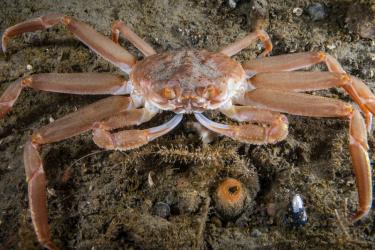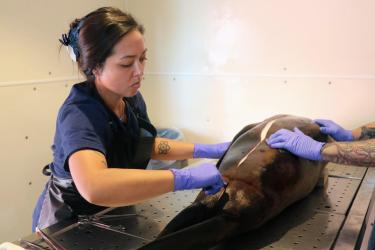You can find deep-water corals and sponges worldwide. They provide important structural habitat for various marine species, including commercially valuable species such as rockfish. However, we do not fully understand these deep-water coral communities' overall distribution and species composition.
In collaboration with the Deep-sea Coral Research and Technology Program and partners from multiple NOAA centers and scientific organizations, we seek to understand these corals and sponges' distribution, connectivity, and biodiversity. Our team collects voucher specimens to develop and maintain a library of genetic markers for species identification and taxonomy. Also, we use specimens to study population structure across coral communities.
We use genetic tools including barcoding, environmental (eDNA) sequencing, and high throughput genotyping-by-sequencing to identify species, population connectivity, and community biodiversity in deep-sea coral habitats.
For example, in octocorals (sea fans), we use two mitochondrial genes, cytochrome oxidase, and a coral-specific DNA repair gene, MutS, to develop species-specific markers (commonly called "barcodes") in collaboration with taxonomists. We apply these barcodes to identify unknown samples in the NOAA collection and identify species in eDNA metabarcoding studies from deep-sea habitats. We apply these techniques to deep-sea sponge communities as well.
Contact
Meredith Everett, Biologist
Krista Nichols, Genetics and Evolution Program Manager


